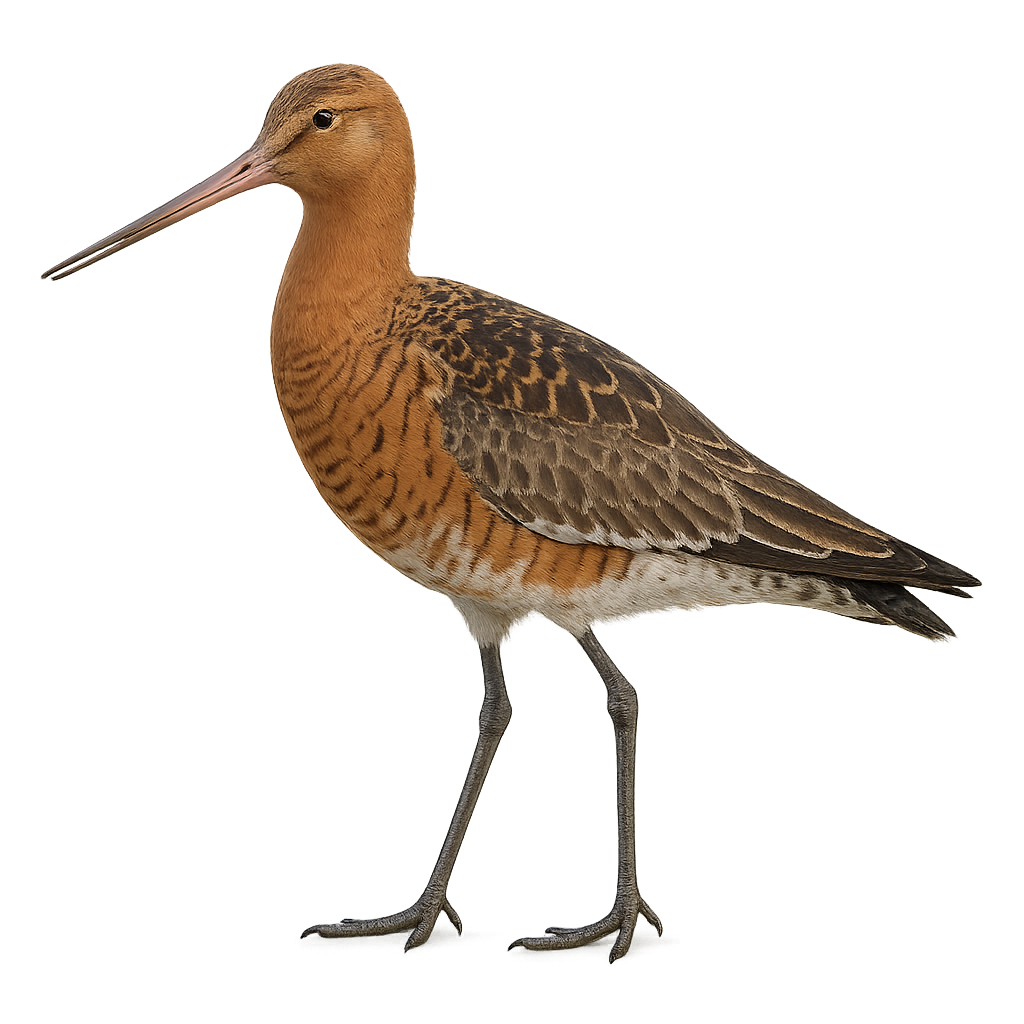Observe and photograph a species in its natural habitat
Learn where and when to observe a species in the wild, how to recognize it in the field, and what habitats it lives in. Get photography tips adapted to its behavior and capture stunning images without disturbing the animal. For full details, open the complete profile in the WildlifePhotographer app.
Bar-tailed Godwit
Scientific name: Limosa lapponica

IUCN Status: Least Concern
Family: SCOLOPACIDAE
Group: Birds
Shyness: Suspicious
Safe distance: 30 m
Breeding season / Courtship: 01.04-30.04
Gestation: 22 à 24 jours
Births: 23.05-24.06
Habitat:
Wetlands, marshes, and tidal flats
Description:
The Bar-tailed Godwit is a remarkable wader, easily recognized by its distinctive plumage, which varies from reddish-brown to gray and white, and its long, slightly downward-curved bill. It primarily inhabits coastal areas and wetlands in Europe and Asia, where it feeds on small marine invertebrates, mollusks, and insects, which it detects in the sediment. The Bar-tailed Godwit is a migratory bird, covering great distances between its breeding grounds in the Arctic regions and its wintering areas in more temperate zones.
During the breeding season, the Bar-tailed Godwit engages in particularly interesting nesting behavior, establishing nests on the ground in grasses or boggy areas.
Recommended lens:
>=300 mm
Photography tips:
Approach slowly and discreetly using a telephoto lens to avoid disturbing the redshank, which can fly away quickly if it feels threatened.
Photograph early in the morning or late in the afternoon, when the light is softer and the bird is more active searching for food in marshy areas or mudflats.
Capture moments of foraging: The redshank uses its long bill to probe the mud, creating interesting photographic opportunities, especially when it’s searching for prey.
Be patient: The redshank spends a lot of time feeding or resting on sandbanks or mudflats, so wait for the right moment to capture a natural photo.
Although the redshank is not currently endangered, it is important to respect its natural habitat and avoid disturbing its feeding or breeding activities. Make sure to stay discreet and follow local conservation rules to minimize your impact on this species.
Ready to take action?
Choose your platform and start your free trial today



